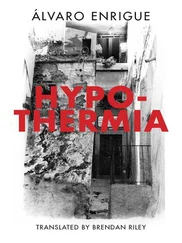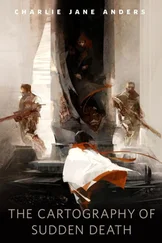Friend and lover of Apollo, Hyacinth was the son of Clio and a Macedonian or Peloponnesian king — depending on who tells the tale, he was either Macedonian or Spartan. The god, deeply in love with the hero, was training him in the stadium arts when he tossed him the discus with divine strength and inadvertently killed him. He wept so much and so vigorously that his tears transformed Hyacinth’s body into the flower that bears his name, which prevented Hades from carrying him away to the underworld.
In classical representations of the myth, which in ancient Greece was associated with the passage from adolescence to adulthood, Zephyr, god of the wind, rises up with Hyacinth to save him from hell. The specialist term for the posture in which they rise is intercrural coitus —that is, a kind of coitus in which there is no penetration, and orgasm is produced by the friction of the genitalia on the thighs of the two participants.
Cecco del Caravaggio was the most loyal of the Caravaggisti, painters who imitated Merisi until the star of his art faded. And he was the only one of them who worked in Merisi’s studio and accompanied him on most of the escapades that made him infamous as a man with a tendency for insubordination, for conduct that defied the norm of the city of the popes, and — inevitably — for crime. Cecco’s nudes depicting Love laughing raucously or Saint John the Baptist as a young man are still provocative in their frontal frankness.
In the painting of the death of Hyacinth — a subject later also taken up by Tiepolo — Apollo weeps for his lover. Instead of the discus of the original myth, he is carrying a racket in his hand. At the feet of the hero, a hyacinth blooms next to his own tennis racket — a fallen bird.

Hernán Cortés returned from the expedition to Las Hibueras a year and a half after giving the order to garrote Cuauhtémoc, and after bestowing a Spanish husband and the town of Orizaba on Marina. Of the three thousand five hundred men with whom he claimed what would later be called Honduras, he returned with only eighty, all of them Spanish. The Indians — always the overwhelming majority in his armies — had fulfilled what may have been their sacred destiny, hearing the bark of three thousand four hundred and twenty dogs in the night and following through sickness and war their last emperor to his death. Surely many of them, upon finding themselves in strange lands that couldn’t even be conquered because there were no empires to fight, simply took to the bush and swore off the ridiculousness of being Christians and vassals of Charles V.
The expedition to Las Hibueras had been a grand failure. There was the precipitous stretch of Guatemalan mountain on which, between those that were lamed or fled into the wild and those that plunged over the edge, sixty-eight horses were lost. There was hunger. There were ambushes. During one of them, an arrow struck Cortés in the head; no convincing explanation exists of how it was removed and how he was able to carry on. There were illnesses and no Tlaxcalan shaman girls to cure them, only cantankerous old Mayan women to make them worse.
The lives of Cortés and eighty of his thousands of men were saved because at some point on the Honduran coast they found a well-provisioned Spanish ship. The conquistador bought it on credit — lock, stock, and barrel, including the crew — and continued the expedition by sea. Upon his return he even allowed himself the privilege of stopping by Cuba to see his friends, returning to Veracruz plumper and in clean clothes.
He spent the first night of the trip back to Mexico City in Orizaba. There, La Malinche paid a polite visit to the conquistador at the house of the town elder, where he was staying. They sat at the table and talked: bitter enemies now, like all those who have slept together long and well but no longer share a bed. He lied about the success of his expedition and the importance of the three port cities he had founded and let die. She said — as all ex-wives say — that she was glad to be out from under the thumb of a man past his prime, that it was their son — named Martín, of course — whom she missed, though he hadn’t been to visit her despite all the messages and gifts she had sent him. Finally, she handed him the sparrow woven from the hair of the last Aztec emperor. What is it, asked Cortés. After his bouts of fever in the jungles of El Petén, he sometimes forgot things. The scapular you asked me for, said Marina. Cortés smelled it, then held it out before him. You haven’t worn it, he said. I’d have to be crazy. On the face of the pendant was not the silver medallion that the conquistador had sent to her on the day Cuauhtémoc died, but an image in featherwork of the Virgin of Guadalupe. Cortés kissed the image, tilted it until he found the point at which it glowed with refracted light, and smiled with a sincerity that he could come by only very infrequently now. Thank you, he said, clutching it in his fist. He put it on.
When the bard Lope Rodríguez found him lying dead in his house in Castilleja de la Cuesta, outside Seville, he removed it from around his neck. He had never taken it off.

In 1620, the doctor and artists’ biographer Giulio Mancini devoted an entry in his book Considerazioni sulla pittura to Michelangelo Merisi da Caravaggio, whom he had once treated after a rather flamboyant accident involving knife slashes and horse kicks. The brief biography of the artist begins like this: “Our age owes much to the art of Merisi.”
From Giulio Mancini we learn that Caravaggio had reached Rome in 1592, at the age of twenty-one. He went to live at the loggia of the Colonna family and was employed by Camilla Montalto, sister of Pope Sixtus V. The artist must have come to her on the recommendation of Princess Costanza Colonna, who had employed his father as a master stonemason in Milan. The Lombardy noblewoman had always shown a great weakness for Caravaggio: she had protected him as a boy during the terrible plague that took his father, and spent her life applying for work and clemency for him at his frequent request.
It’s no surprise, either, that the Colonnas were interested in introducing a painter into the explosive city of Rome at the end of the sixteenth century. Lombardy had turned out great bankers, brilliant generals, and pedigreed priests, but its status wouldn’t be secure for all eternity if it didn’t also furnish a native of Milan capable of decorating the walls of a Roman church.
Caravaggio was a painter of undistinguished images of saints during the period in which he lived in the Colonna loggia. Camilla Montalto put him to work for Pandolfo Pucci, the miserable bastard priest who made him paint in return for sustenance that scarcely deserved the name: in his household, the servants ate nothing but lettuce.
Says Mancini: “Salad for the first course, the main dish, dessert, and even for toothpicks.” On Caravaggio’s already formidable drunken sprees, compensation for the rigors of trying to make a life as a young artist in a city to which all the young artists of Europe had already moved, he would call his patron “Monsignor Insalata.” The fact that Mancini knew this suggests that in his own youth he must have been something less than a paragon of good behavior.
Naturally, Merisi soon left the service of Camilla Montalto and her Monsignor Insalata. Before he left, he took the Boleyn ball as recompense. He wasn’t interested only in its chest, which he surely sold off cheap to a cut-rate jeweler. Next to painting, pallacorda was the great passion of his life and a source of income.
Читать дальше













